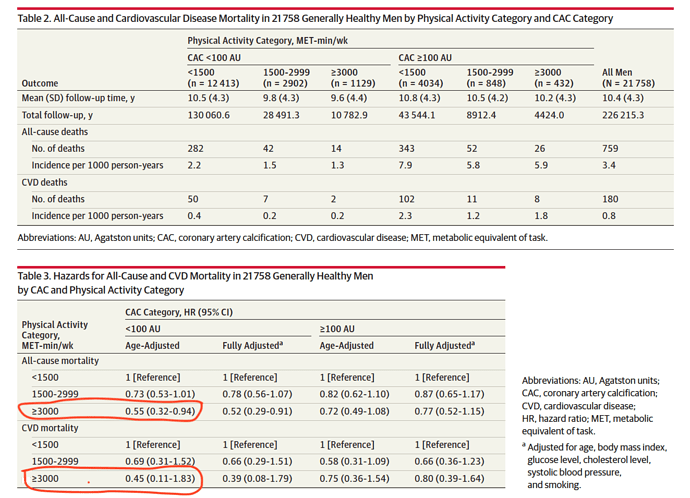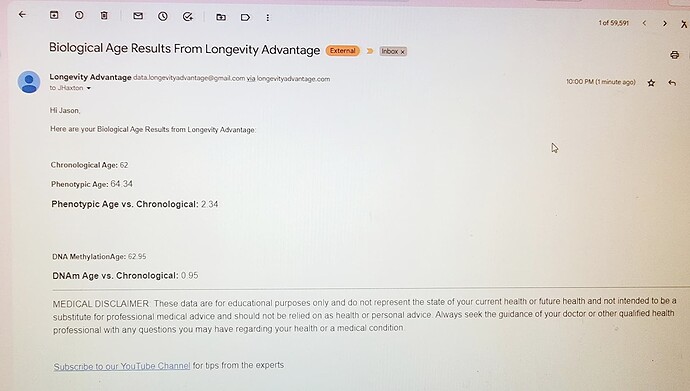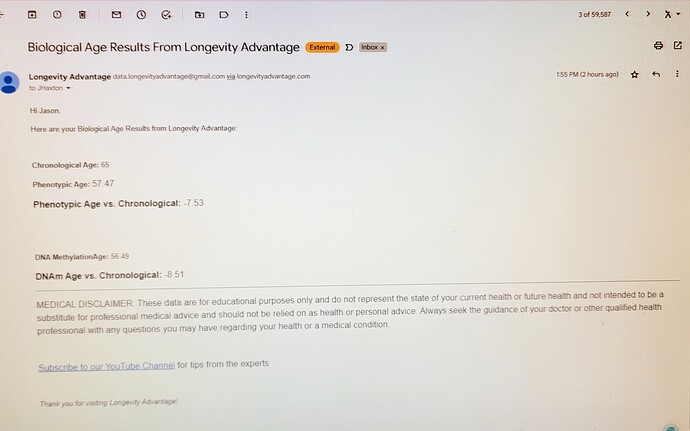A few notes on calculating your Levine Phenotypic Age.
. . . . . . . . . . . . . . . . . . . . . . .
I. First, you will need three blood tests:
-
CBC and Differential (“and Differential” ensures that you receive your Lympocyte percent value)
-
Comprehensive Metabolic Profile
-
C-Reactive Protein
. . . . . . . . . . . . . . . . . . . . . . .
II. Second, the spreadsheet offered in the OP (original post) and found in the following link uses some shorthand that not all of us understand. Quantifying Biological Age | Michael Lustgarten
Here are some notes on the variables for the spreadsheet:
-
Albumin: Found on the Metabolic Test. Input the g/dL number, which is probably what your test gives you.
-
Creatinine: Metabolic Test
-
Glucose: Metabolic Test
-
CRP: C-Reactive Protein Test
-
Lympocyte %: This is found in the “with Differential” section of your CBC (complete blood count). Be sure to enter the percent value and not the absolute value; both may be on your test.
-
Mean Cell Volume: On CBC may be called “MCV”
-
Red Cell Dist Width: On CBC may be called “RDW %”
-
Alkaline Phosphatase: On Metabolic test
-
White Blood Cells: On CBC may be called “WBC Count K/uL”
I received most of the above values from my family doctor from routine blood work as part of an annual physical. However, one year she added the Differential and one year she did not. I will be asking for the “with Differential” from now on.
. . . . . . . . . . . . . . . . . . . . . . .
III. Third, the value that I did not receive from my routine blood work was the C-Reactive Protein. When I searched “CRP test” online, Google gave me a sponsored ad offering the test for $12.95. After an $8 draw fee it cost me $20. I purchased the test through “Ulta Lab Tests”. They sent me to a local “Quest Diagnostics” for the test. The results were given within 24 hours. Next time I will request this test from my family doctor.
. . . . . . . . . . . . . . . . . . . . . . .
IV. Fourth, the Lustgarten spreadsheet does not make it clear where your calculated age is found once you have inputted the requested values (which are the blue numbers). Your calculated age is the red number at the bottom of the page under “Ptypic Age.”
. . . . . . . . . . . . . . . . . . . . . . .
V. Finally, for the record:
- My natural age is 48.3
- My Aging.ai calculated age is 49.0
- My Levine calculated age is 42.9
I have not begun taking rapamycin, but it is coming in the mail. I live pretty healthily. I do not take any special meds apart from oral 1.25g Minoxidil daily and oral 0.25 pill Finasteride daily. Supplements are daily Vitamin D, Zinc, Magnesium. I also eat Kimchi daily with broccoli spears and supplement with fiber.
I hope this helps!



